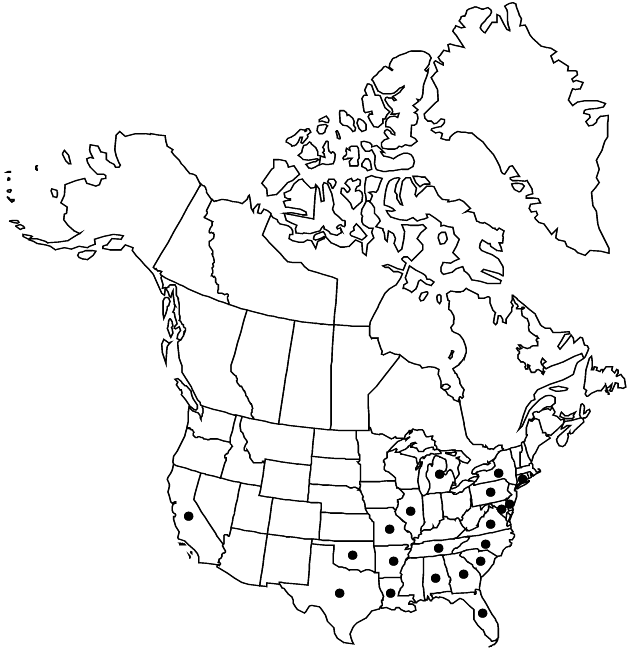Difference between revisions of "Cosmos sulphureus"
Icon. 1: 56, plate 79. 1791.
FNA>Volume Importer |
imported>Volume Importer |
||
| (6 intermediate revisions by 2 users not shown) | |||
| Line 6: | Line 6: | ||
|place=1: 56, plate 79. 1791 | |place=1: 56, plate 79. 1791 | ||
|year=1791 | |year=1791 | ||
| + | }} | ||
| + | |special_status={{Treatment/ID/Special_status | ||
| + | |code=I | ||
| + | |label=Introduced | ||
}} | }} | ||
|basionyms= | |basionyms= | ||
| Line 23: | Line 27: | ||
|elevation=0–1000 m | |elevation=0–1000 m | ||
|distribution=Ala.;Ark.;Calif.;Conn.;Del.;Fla.;Ga.;Ill.;La.;Md.;Mich.;Mo.;N.Y.;N.C.;Okla.;Pa.;S.C.;Tenn.;Tex.;Va.;Mexico;also introduced in West Indies;Central America;South America;Asia;Africa;Pacific Islands. | |distribution=Ala.;Ark.;Calif.;Conn.;Del.;Fla.;Ga.;Ill.;La.;Md.;Mich.;Mo.;N.Y.;N.C.;Okla.;Pa.;S.C.;Tenn.;Tex.;Va.;Mexico;also introduced in West Indies;Central America;South America;Asia;Africa;Pacific Islands. | ||
| + | |introduced=true | ||
|tables= | |tables= | ||
|references= | |references= | ||
| Line 31: | Line 36: | ||
-->{{#Taxon: | -->{{#Taxon: | ||
name=Cosmos sulphureus | name=Cosmos sulphureus | ||
| − | |||
|authority=Cavanilles | |authority=Cavanilles | ||
|rank=species | |rank=species | ||
| Line 46: | Line 50: | ||
|publication title=Icon. | |publication title=Icon. | ||
|publication year=1791 | |publication year=1791 | ||
| − | |special status= | + | |special status=Introduced |
| − | |source xml=https:// | + | |source xml=https://bitbucket.org/aafc-mbb/fna-data-curation/src/2e0870ddd59836b60bcf96646a41e87ea5a5943a/coarse_grained_fna_xml/V19-20-21/V21_504.xml |
|tribe=Asteraceae tribe Heliantheae | |tribe=Asteraceae tribe Heliantheae | ||
|subtribe=Asteraceae (tribe Heliantheae) subtribe Coreopsidinae | |subtribe=Asteraceae (tribe Heliantheae) subtribe Coreopsidinae | ||
Latest revision as of 20:12, 5 November 2020
Plants 30–200 cm, glabrous or sparsely pilose to hispid. Leaves: petioles 1–7 cm; blades 5–12(–25) cm, ultimate lobes 2–5 mm wide, margins sparsely spinulose-ciliate, apices apiculate. Peduncles 10–20 cm. Calyculi of spreading-ascending, linear-subulate bractlets 5–7(–10) mm, apices acute; Involucres 6–10 mm diam. Phyllaries erect, oblong-lanceolate, 9–13(–18) mm, apices acute to rounded-obtuse. Ray corollas intensely yellow to red-orange, laminae obovate, 18–30 mm, apices ± truncate, denticulate. Disc corollas 6–7 mm. Cypselae 15–30 mm, usually hispidulous, rarely glabrous; pappi 0, or of 2–3 widely divergent awns 1–7 mm. 2n = 24, 48.
Phenology: Flowering summer–fall.
Habitat: Disturbed sites
Elevation: 0–1000 m
Distribution

Introduced; Ala., Ark., Calif., Conn., Del., Fla., Ga., Ill., La., Md., Mich., Mo., N.Y., N.C., Okla., Pa., S.C., Tenn., Tex., Va., Mexico, also introduced in West Indies, Central America, South America, Asia, Africa, Pacific Islands.
Discussion
Selected References
None.